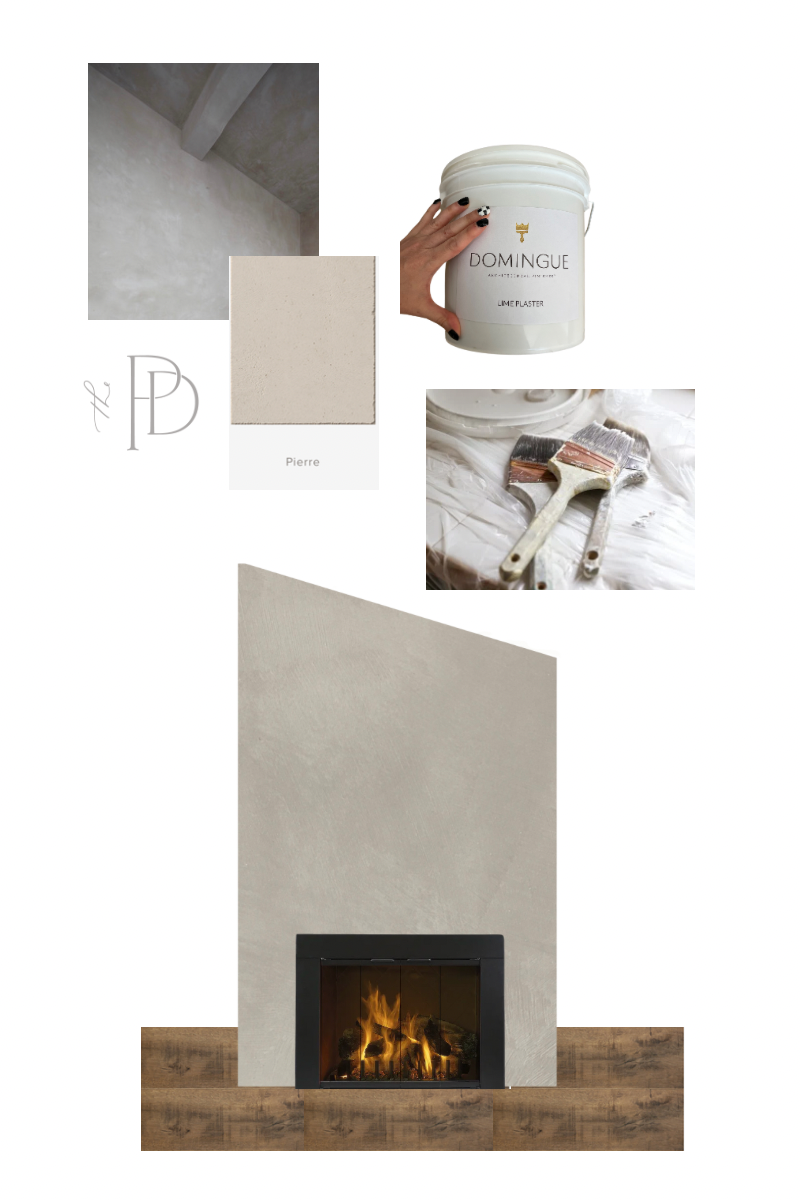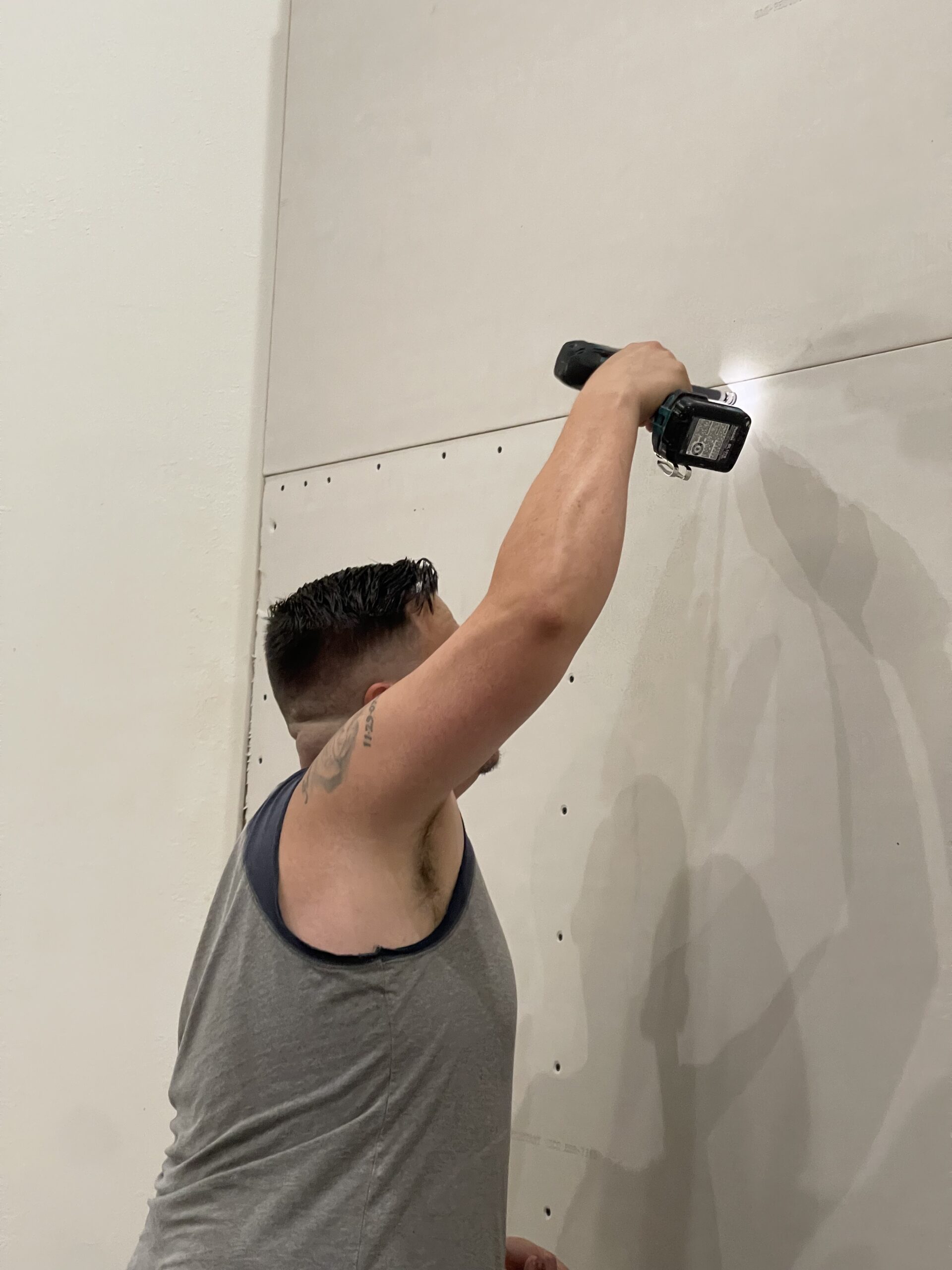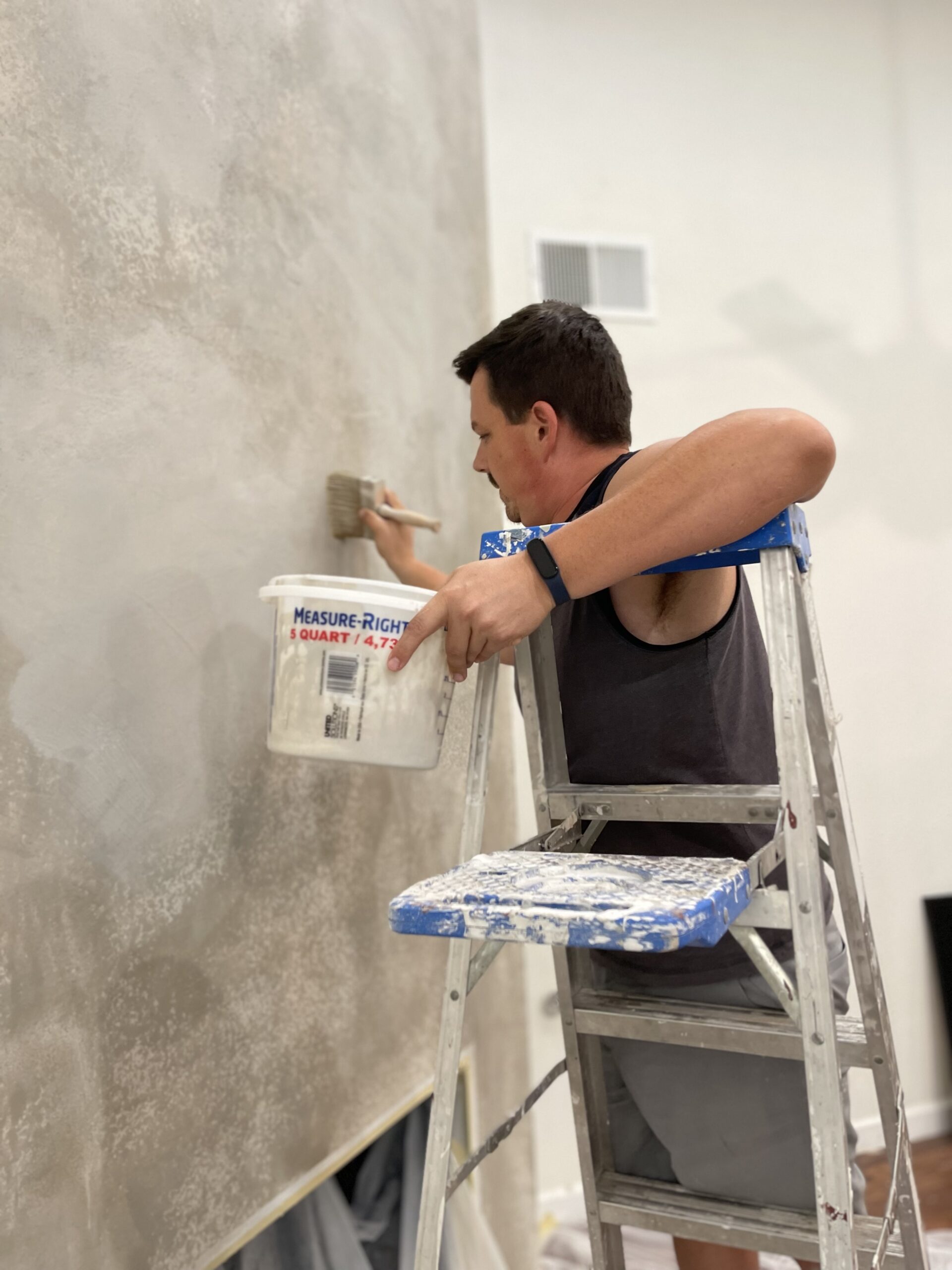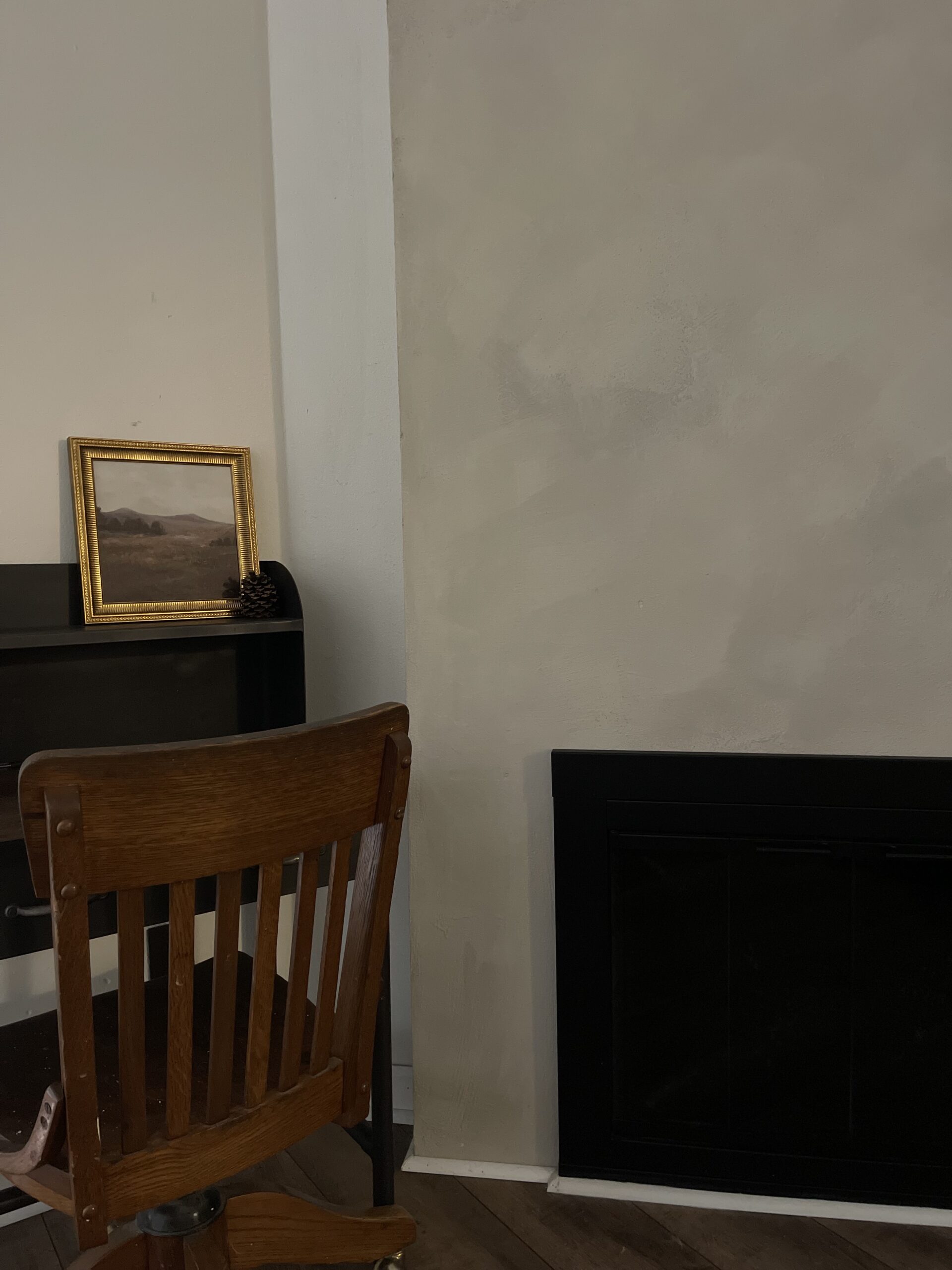Lime Plaster Fireplace Makeover
Our Lime Plaster Fireplace Makeover
If you're looking to do a fireplace makeover, you're in the right place. When my family and I moved into our home a few years ago, one of the major attractions was the vaulted ceilings and a cozy floor-to-ceiling corner fireplace. However, as time passed, I realized that the old brick fireplace was making the living room look outdated, and it was time for a change. After browsing through several ideas on Pinterest, I decided to go for a concrete or plaster look.
Fireplace Makeover Plans
The process of renovating the fireplace was reasonably straightforward, but the tricky part was deciding what materials to use to achieve the desired look. Instead of following the tempting faux-look trends on Pinterest and YouTube, we used natural lime plaster to create a timeless, eco-friendly, locally sourced look that would age gracefully. If you're planning to use lime plaster to renovate your fireplace, you can follow the steps we took to achieve the desired outcome.
Framing out the Fireplace with Wood
We decided to cover the fireplace to ensure the even application of plaster. However, before we could do that, we needed to build a frame around it. We used a measuring tape, pieces of 2x4 wood, long concrete screws, and a skill saw to create a sturdy frame for our fireplace makeover. My husband carefully took measurements, then expertly cut and attached the pieces of wood to the fireplace, creating a solid and secure frame.
Covering the Wood with Sheetrock

Once the fireplace was framed, we were ready to cover it with sheetrock. For this step, we used a measuring tape, about three pieces of sheetrock, sheetrock screws, and a utility knife. After carefully measuring, cutting, and attaching the sheetrock with special screws, we were on to the next step.

Fireplace Makeover: Mudding and Taping the Sheetrock
Next, the sheetrock had to be tapped and mudded to cover all the screw holes, create seamless corners, and provide a smooth surface to apply primer before moving on to the plasterwork. For this, we used sheetrock tape, an all-purpose joint compound, joint and tapping knives, a mudpan, a bucket, a drill, and a mixing attachment for the drill.
We began by reconstituting the joint compound in a bucket with water, utilizing the drill mixing attachment until the mud reached the desired consistency. Tape and mud were applied to the corners and seams of the sheetrock, where one piece met another.
Sanding the Fireplace
To prepare the fireplace for primer, the fireplace had to be sanded to create a smooth surface. To sand, we used a combination of dry and wet sanding. For traditional dry sanding, we used regular sandpaper, aiming to gently knock down and smooth out lumps and bumps created from the joint compound. After the dry sanding, a damp sponge was used to smooth out any unwanted residual texture.
Priming the Fireplace
Once the frame was complete, we proceeded to prime it in preparation for the lime plaster finishes. We decided to use Domingue Architectural Finishes for this project's mineral primer, plaster, and limewash paint. Although the choice of pigmented or regular primer is a matter of preference, we went for pigmented primer at first, only to realize later that it was unnecessary as it gets covered anyway. In hindsight, using a regular primer would have been more economical. We primed using a roller, an extension, a paint tray with inserts, and mineral primer. Starting from the top, we rolled the primer down the frame.
Applying Limestone Plaster during the Fireplace Makeover
This is where things really started getting exciting. Before applying plaster, we tested it on a scrap piece of sheetrock. Once we were satisfied, my husband plastered the fireplace from top to bottom using Dominique lime plaster in Pierre. The plaster comes in a mineral powder and has to be mixed with water before applying. We put the mineral powder in a five-gallon bucket to prepare the plaster. We slowly added water while mixing it with the drill mixer attachment. Once the plaster reached a concrete-like consistency, we applied it using a rounded-edge towel and a mud pan, working from the top down. We applied a thin, even layer and did two coats to achieve the desired look. After applying the plaster, it took around 12 hours to cure.

Applying a Limewash Glaze to the Plaster
The most daunting aspect of my project was selecting the right finishes. My perfectionist tendencies almost drove me to the brink of insanity. After a ton of back and forth, I decided to incorporate a limewash glaze to add more depth and dimension to the plaster. To create a limewash glaze, you must first dilute mineral limewash paint in water. I opted for a darker shade and a lighter hue. The first step was to apply the dark undercoat, which we left to dry before adding the lighter shade.
Applying limewash glaze requires a few essential tools - a limewash brush, a bucket, water, and the limewash paint. The paint should be watered down to your desired shade. Begin by starting in a corner and using broad, continuous strokes in an X-like pattern to create cloud-like formations. After each cloud, move to an adjacent area and create another one. Fan out towards the previous cloud, ultimately merging the two together. Repeat this procedure until the entire surface is covered. Usually, 2-3 coats are recommended, with adequate drying time between each coat.
One of the best things about working with Dominque Architectural Finishes is their provision of in-depth, step-by-step guides on how to apply their products. They also have several how-to videos that visually represent the process.
Inserting a New Fireplace Door
The original fireplace had old, unattractive mesh curtains hanging from it. We decided to install a proper door to update the look of the fireplace and make it safer. However, the fireplace opening was an unusual size, so we had to get a custom door made. The door came with an installation kit, and after some minor adjustments, we were able to install it according to the manufacturer's instructions.
Adding Trim to the Fireplace
To achieve a cohesive look, we added a quarter-round trim along the edge of the fireplace to match the existing trim throughout the house. We carefully measured and cut a 6-foot piece of quarter-round using a saw, considering the many tricky little corners that had to be approximated and cut precisely. Once the cuts were made, we secured the trim using nails from an impact driver. The result was a beautiful and seamless fireplace makeover that tied the whole room together.
Final thoughts on our Fireplace Makeover
In just 9 simple, yet not insignificant, steps, we were able to give our fireplace a complete and stunning makeover. At first, using specialty finishes seemed daunting, but we decided to go for it and use lime plaster. Although it took some trial and error, I'm glad we didn't agonize too much over getting the finishes just right. Admittedly, I did drive my husband a bit crazy with the many pieces of sheetrock I used up trying to achieve the perfect finish. In the end, the imperfections were what made the look perfect. It's incredible how a little creativity, patience, and some elbow grease can transform a space and bring new life to an old feature.

